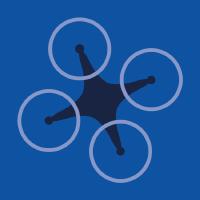A new risk methodology to model UAS collision risk in all classes of airspace is explained in an academic article published by MDPI. It responds to new challenges presented by the progressive introduction of Unmanned Aircraft Systems (UAS) and other forms of air mobility, compounded by a growing need to address both offline and online operational requirements. It recognises the long history of collision risk modelling in the aviation industry, where mature models are currently utilised in the strategic planning of airspace sectors and air routes.
The new methodology proposes a comprehensive risk management framework, which relies on a novel methodology to model UAS collision risk in all classes of airspace. This methodology inherently accounts for the performance of Communication, Navigation and Surveillance (CNS) systems, and, as such, it can be applied to both strategic and tactical operational timeframes. Additionally, the proposed approach can be applied inversely to determine CNS performance requirements given a target value of collision probability. This new risk assessment methodology is based on a rigorous analysis of the CNS error characteristics and transformation of the associated models into the spatial domain to generate a protection volume around each conflicting traffic. Additionally, a methodology to quickly and conservatively evaluate the multi‐integral formulation of collision probability is introduced. The validity of the proposed framework is tested using representative CNS performance parameters in two simulation case studies targeting a terminal manoeuvring area and an enroute scenario, respectively.
The article is jointly authored by Suraj Bijjahalli, Alessandro Gardi, Nichakorn Pongsakornsathien, Roberto Sabatini, and Trevor Kistan.
For more information visit:




